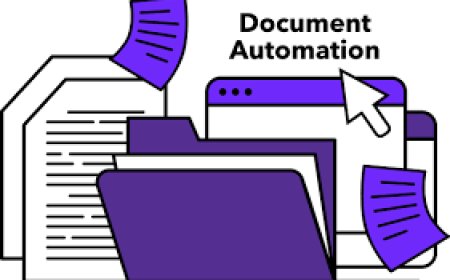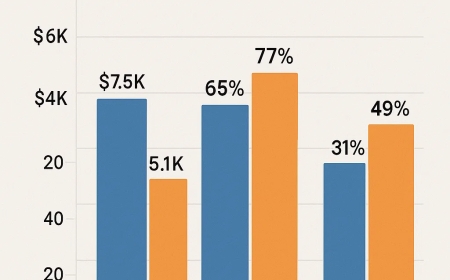Troubleshooting Common Issues When Working with Microsoft Office Files in Golang
In this post, we'll explore some common issues developers face when working with Microsoft Office files in Golang and how to troubleshoot them. We’ll also introduce UniDoc, a powerful library designed to simplify the handling of Microsoft Office files in Go.

When it comes to working with Microsoft Office files in Golang, developers often face various challenges that can slow down the development process. Whether it's handling Excel files, Word documents, or PowerPoint presentations, there are several common issues that can arise. Thankfully, with the right tools and approaches, many of these challenges can be addressed effectively.
In this post, we'll explore some common issues developers face when working with Microsoft Office files in Golang and how to troubleshoot them. Well also introduce UniDoc, a powerful library designed to simplify the handling of Microsoft Office files in Go.
Understanding the Need for Working with Microsoft Office Files in Golang
Before diving into the troubleshooting aspects, lets first understand why developers might want to work with Microsoft Office files in Golang. Golang is known for its efficiency, scalability, and concurrency. Many developers use it to automate processes, extract data from Office files, or generate reports. However, since Golang doesnt have built-in libraries for handling Microsoft Office formats, youll need external libraries to help.
UniDoc offers a Go-based solution for reading, writing, and manipulating Office files. By integrating UniDoc into your Golang projects, you can seamlessly handle Excel, Word, and PowerPoint files while maintaining the speed and power that Golang is known for.
Now, lets take a look at some common problems developers encounter when working with Microsoft Office files in Golang and how to resolve them.
Problem #1: Unable to Read or Write Excel Files Properly
One of the most common issues developers face is the inability to read or write Excel files correctly. Microsoft Excel files (.xls or .xlsx) can contain multiple sheets, formulas, charts, and other complex elements, making them tricky to handle in Golang.
Possible Causes:
-
Using an incompatible library for reading/writing Excel files.
-
Not handling the different data types correctly (e.g., numbers, dates, strings).
-
Errors in parsing cell references.
How to Fix It:
To work with Excel files in Golang, use a reliable library like UniDoc. It provides comprehensive functionality for reading and writing Excel files, supporting all Excel features, including formatting, formulas, and images.
When using UniDoc, make sure to:
-
Use ReadExcelFile() to properly load Excel files.
-
Use the librarys support for iterating through rows and cells to handle data types effectively.
-
Handle potential errors gracefully, especially for formulas and complex cell references.
Problem #2: Handling Complex Word Documents
Working with Word documents (.docx) in Golang can be tricky due to the complex structure of these files. Word documents may contain text, images, tables, headers, footers, and other elements that need to be parsed and manipulated correctly.
Possible Causes:
-
Incorrect parsing of embedded objects or images.
-
Issues with handling different styles or formatting.
-
Not recognizing tables or lists as separate entities.
How to Fix It:
Using UniDocs capabilities for Word files is a great way to avoid these issues. It allows you to extract text, modify content, and preserve complex structures without losing formatting.
When dealing with Word documents in Golang:
-
Use the ReadWordFile() method to load a Word file and ensure that you capture all sections, including headers, footers, and tables.
-
When writing or updating content, take care to preserve the document's formatting and structure.
-
If handling images or other embedded objects, use UniDocs features for image extraction and insertion to avoid errors.
Problem #3: Corrupted Files or Unsupported File Formats
Another common issue when dealing with Microsoft Office files in Golang is encountering corrupted files or unsupported file formats. Sometimes, files may be damaged or in a format that your library doesnt support, leading to parsing errors.
Possible Causes:
-
File corruption during download or transmission.
-
Using outdated libraries that don't support the latest Office formats.
-
Incompatibility with older Office file versions.
How to Fix It:
To avoid issues with corrupted files, ensure that you:
-
Use a reliable, robust library like UniDoc that supports all modern Office file formats (.docx, .xlsx, .pptx) and handles older versions as well.
-
Validate files before processing them by checking for corruption or unsupported structures.
-
Implement error handling that gracefully handles such scenarios and provides clear feedback.
Problem #4: Slow Performance with Large Files
Another problem developers often face is slow performance when working with large Microsoft Office files. Files with many sheets, large tables, or embedded images can significantly slow down the reading, writing, and processing operations.
Possible Causes:
-
Inefficient algorithms for parsing large files.
-
High memory usage when handling large data sets.
-
Lack of optimization for handling embedded images or objects.
How to Fix It:
To improve performance when dealing with large Office files, consider the following:
-
Use UniDocs optimized methods for handling large files, which can read and write efficiently even with large data sets.
-
Avoid loading the entire file into memory at once. Instead, stream data or process the file in chunks.
-
Consider caching intermediate results if youre processing multiple files or large datasets.
Problem #5: Limited Support for Complex Office Features
Working with Microsoft Office files often means dealing with advanced features such as embedded objects, macros, or VBA scripts. Unfortunately, many Go libraries dont provide full support for these complex Office features.
Possible Causes:
-
The library being used doesnt support embedded objects or complex macros.
-
Missing features for specific Office elements such as charts, diagrams, or special formatting.
How to Fix It:
With UniDoc, you can manage complex Office features effectively. The library provides robust support for working with embedded objects and advanced formatting.
To troubleshoot this:
-
Leverage UniDoc's support for advanced features like charts and VBA macros.
-
Ensure that you are using the latest version of the library to benefit from improved support for complex features.
Conclusion
While working with Microsoft Office files in Golang can be challenging, its not without solutions. By using a reliable library like UniDoc, you can overcome the common pitfalls and troubleshoot most of the issues developers face.
Whether you're working with Excel files, Word documents, or PowerPoint presentations, UniDoc offers a powerful, efficient, and easy-to-integrate solution for managing Microsoft Office files in Golang. By following best practices and troubleshooting common issues, you can streamline your workflow and improve the performance and reliability of your Golang applications.








&srotate=0)


























